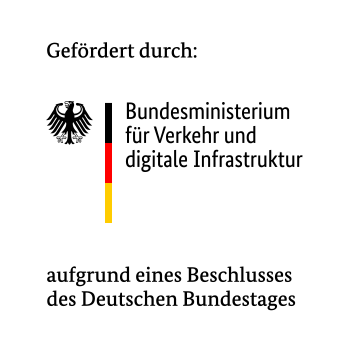Project start TreeVitaScan
Increasing safety on transportation routes through efficient tree vitality monitoring
How can the vitality of trees be assessed quickly and reliably? In the TreeVitaScan project, researchers from Fraunhofer IPM and the University of Freiburg are testing a comprehensive data model that combines multispectral laser scanning with AI-supported data evaluation. This should make it possible to determine the vitality of individual trees automatically, reliably and across a wide area. The project is funded by the Federal Ministry of Digital and Transport with a total of 195,000 euros as part of the mFUND innovation initiative.

Falling trees or branches pose a danger to people, but they also cause enormous economic damage. According to Deutsche Bahn, falling trees are already the most common reason for line closures. A new laser-based measurement method combined with AI-supported data evaluation is set to make tree monitoring more efficient and precise in the future. As part of the TreeVitaScan project, the research partners are developing a process that can be used to create a comprehensive data model of the current state of individual trees. Today, municipalities and road operators inspect the tree population every two to three years. During these inspections, experts examine individual trees and take sporadic measurements – a laborious process. Satellite images are also frequently used for assessment.
3D LiDAR data provide information about soil and tree moisture
In addition to weather and environmental data, as well as tree registry data, the moisture levels of individual trees are to be incorporated into the new data model. This moisture data is recorded by a multispectral 3D LiDAR system developed at Fraunhofer IPM from a road or rail vehicle. The scanner data is easier to interpret than camera images – a decisive advantage that also makes real-time applications possible. One of the questions the Fraunhofer researchers are investigating is to what extent the state of vitality can be automatically derived from the LiDAR data. Together with the team from the University of Freiburg, strategies are also being developed to structure the different data streams and to merge them temporally and spatially in order to create a suitable basis for data modeling.
TreeVitaScan project
Detection of tree vitality using multispectral LiDAR data to minimize storm damage
The project is funded by the Federal Ministry for Digital and Transport with a total of 195,000 euros as part of the mFUND innovation initiative.
Project term
12/2024 – 06/2026
Project partners
- Fraunhofer IPM
- University of Freiburg, Institute of Earth and Environmental Sciences in the Faculty of Environment and Natural Resources (Chair of Environmental Meteorology )

About the mFUND funding program (Federal Ministry of Digital and Transport)
As part of the mFUND funding program, the Federal Ministry of Digital and Transport has been supporting research and development projects related to data-based digital innovations for Mobility 4.0 since 2016. The project funding is complemented by active professional networking between stakeholders from politics, business, administration and research and the provision of open data on the Mobilithek.

